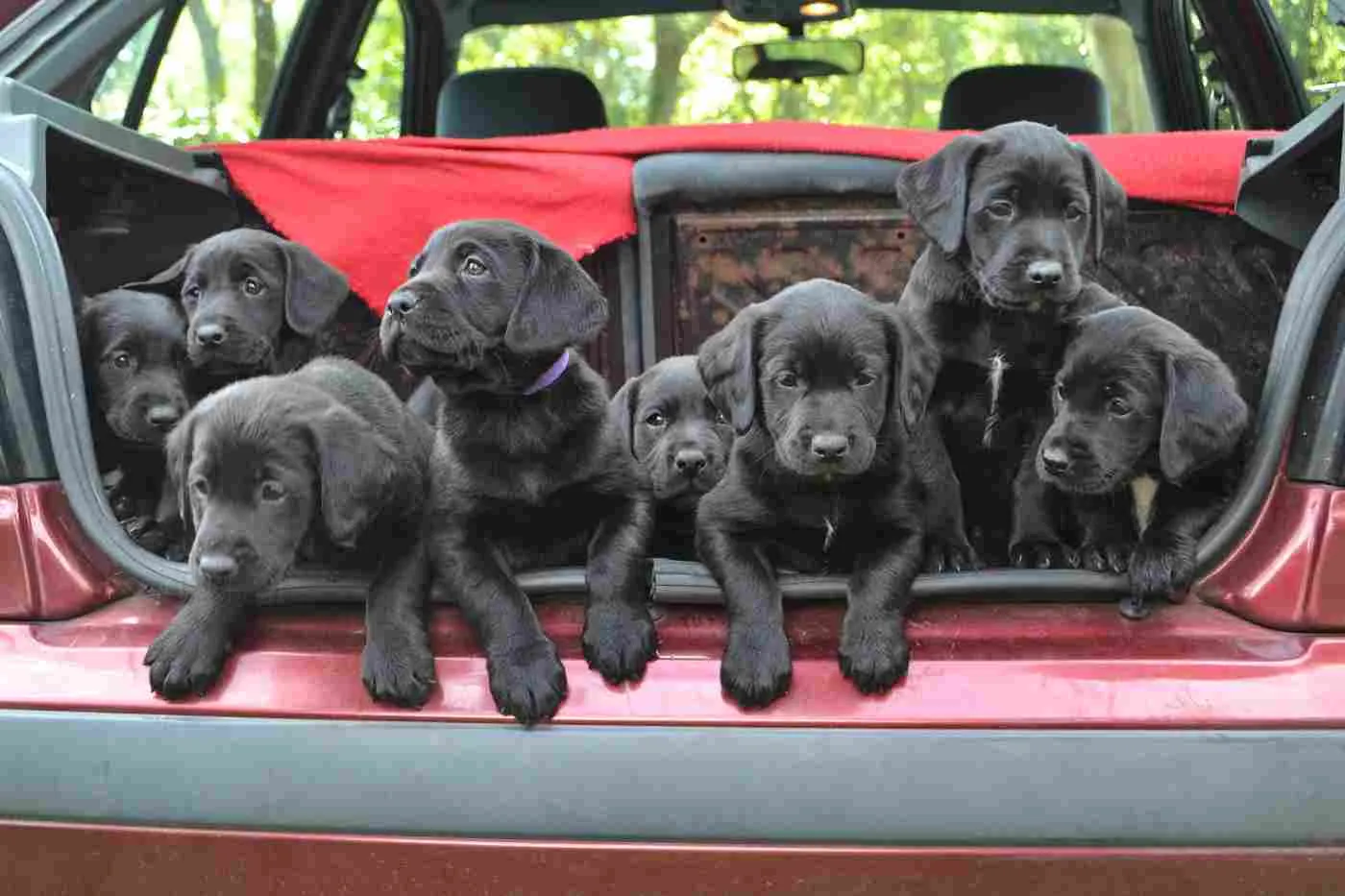Hiking with Dogs – Everyday Adventures
Be it short hikes in the surrounding area, day trips at the weekend or whole hiking holidays with your dog, hiking is a great hobby for human-canine teams!
Many humans are familiar with the problem: They can barely sit for a few minutes in a moving car or on a rocky ship before becoming nauseous – or travel sick. Unfortunately our four-legged friends are often affected by this too. Read in the following article everything you need to know about travel sickness in dogs.

© Eva / stock.adobe.com
Even dogs can suffer from travel sickness.
Travel sickness in dogs of course isn’t dangerous in the sense of being life-threatening. But nausea and vomiting are undesirable both for you and your dog with any journey.
Along with the associated fear of car journeys, a vicious circle soon emerges. So it’s particularly important to do something about your dog’s travel sickness.
The classic symptoms of travel sickness in dogs (also known as kinetosis) include:
The symptoms usually emerge in roughly the order listed above. Of course not all dogs show the full range. There are also dogs that vomit after very short distances with no prior warning.
The organ of balance (vestibular organ) is found in a dog’s inner ear. This organ perceives motion during a car journey.
At the same time, your dog’s eyes don’t recognise any movement because it isn’t moving itself. It is passive motion. The irritation of the organ of balance and subsequent secretion of the messenger substance histamine then lead to nausea and vomiting.
Another important factor in connection with kinetosis in dogs is fear. For instance, if your dog isn’t used to car journeys, both the rocking motion of the car itself and fear of the situation at hand give potential for nausea.
Equally, a dog that has already experienced travel sickness several times will associate the car with nausea in the future. So fear will increase over time and travel sickness too.
Around one in six dogs suffer from travel sickness. Puppies and young dogs are affected particularly frequently. With a bit of luck, travel sickness will disappear in adult age. But even dogs that don’t have this good fortune can be helped.
 © martina alnotte/Eye/Em /stock.adobe.com
© martina alnotte/Eye/Em /stock.adobe.com
Just like there isn’t a sole cause of travel sickness in dogs, treatment consists of numerous components too. There’s no use just treating a dog’s nausea if it enters panic mode at the very sight of the family car.
If your dog has actually developed a fear of car journeys, medication alone cannot solve the problem. Plenty of patience is required, but it is possible to reduce anxiety step by step.
First approach the car and spend some time close to it. If your dog stays calm, it gets a reward. This means that time at the car is associated with something positive.
Once this first hurdle has been overcome, your dog should get in the car. Here too calm behaviour will be rewarded with a treat and stroking.
If your dog stays calm when the car is still, you can start the engine in the next stage and perhaps drive up and down the driveway. Only make the first short journey when it is possible to do this without your dog panicking.
There has to be something positive in wait for your dog at the end of the journey. Go for a long walk or meet up with its best canine pal. Afterwards, the length of the journey can gradually increase.
As you can see, anti-anxiety training can be an extended process. Stay patient and only proceed to the next stage when the previous one goes smoothly without fear. For absolutely unavoidable car journeys during this training period, your dog should definitely receive anti-emetics. Otherwise, all progress made up until then will be undone.
All training is of course useless if your dog is still nauseous during every journey. Hence, medication should also be used. Once your dog realises that car journeys without nausea and vomiting are possible, its fear will diminish.
Since nausea is caused by the secretion of histamine, dogs affected by travel sickness have usually received a type of anti-histamine up until now. This has both an anti-nausea and a calming (sedative) effect. Thinking about the angst-filled dog, this may not sound too bad at first. However, this medication isn’t ideal because the effect lasts longer than the duration of the car journey.
Thankfully maropitant is now a very good anti-emetic. This blocks the vomiting centre in the dog’s brain, so to speak, and therefore prevents vomiting. Your vet will certainly be glad to advise you! Unfortunately this medication is not cheap, but is surely worthwhile for stress-free travel for all involved.
Perhaps your dog only has mild travel sickness or you initially wish to spare it a trip to the vet. In this case, the following homeopathic remedies are suitable:
All remedies should be administered half an hour to an hour before the journey. If necessary, repeat the treatment during the journey too.
Here too, it’s worthwhile getting an expert’s advice when choosing a suitable remedy, because not all homeopathic remedies are right for every dog with travel sickness and its individual symptoms.
Some dogs with just mild symptoms benefit from ginger too. This should be given in capsule form for better acceptance.
Prevention is better than cure when it comes to travel sickness in dogs too. It is of course no guarantee against kinetosis, but it can certainly set things in the right direction.
Ideally, the breeder will already practice the first short car journeys with young puppies. When you take a puppy back to your home, focus during the journey on any small sign of discomfort.
Interrupt the journey and go for a short walk. Even though the journey home may take slightly longer, your puppy’s first car journey shouldn’t be remembered for nausea and vomiting if possible.
Practice car journeys with your puppy. First of all, only choose short distances and only extend journeys slowly. Here too, a positive experience should await your little dog at the end of the car journey as often as possible.
Further tips especially for the first car journeys:
If you have already had a few unpleasant experiences with travel sickness, changing the position in the car can sometimes work wonders. So test out various spots in the car.
Then choose the most pleasant spot for your dog. Your dog must of course still be safely accommodated in the car.
Here are some purchase proposals curated by the zooplus editorial team
The products featured have been carefully selected by our editorial staff and are available at the zooplus online pet shop. The selection does not constitute advertising for the mentioned brands.
Be it short hikes in the surrounding area, day trips at the weekend or whole hiking holidays with your dog, hiking is a great hobby for human-canine teams!
Dog lovers like to take their four-legged best friends everywhere with them. As long as it's just ventures within the city, it's self-explanatory that our four-legged family members go everywhere with us. But what's the situation when it comes to holidays? What are the possibilities for animal lovers when moving a long distance? Is there the opportunity to take a dog on a plane? Or is it better for dog owners to tackle long journeys by car?
Many humans are familiar with the problem: They can barely sit for a few minutes in a moving car or on a rocky ship before becoming nauseous – or travel sick. Unfortunately our four-legged friends are often affected by this too. Read in the following article everything you need to know about travel sickness in dogs.